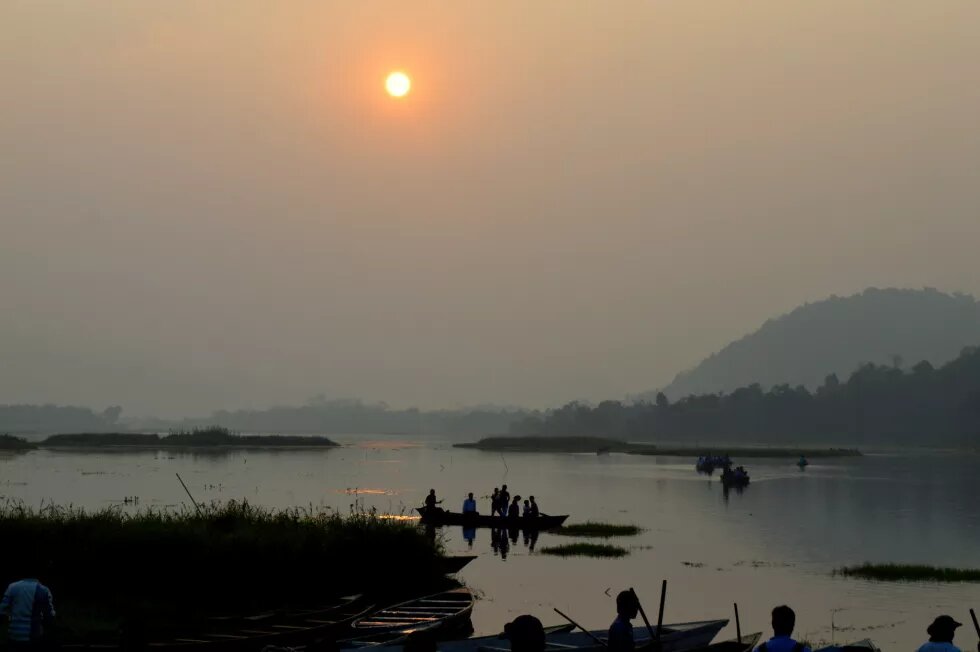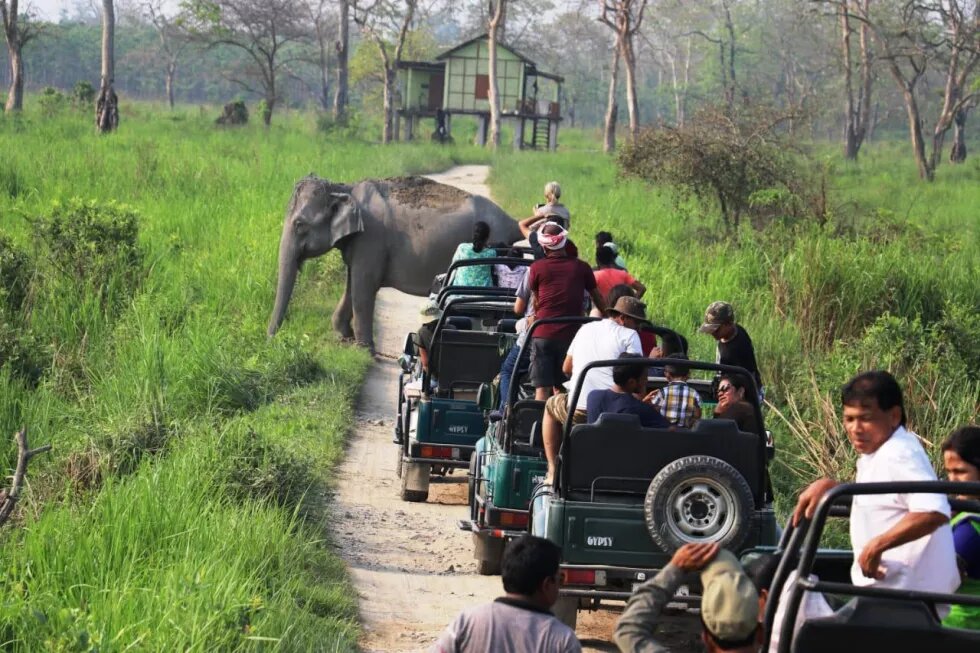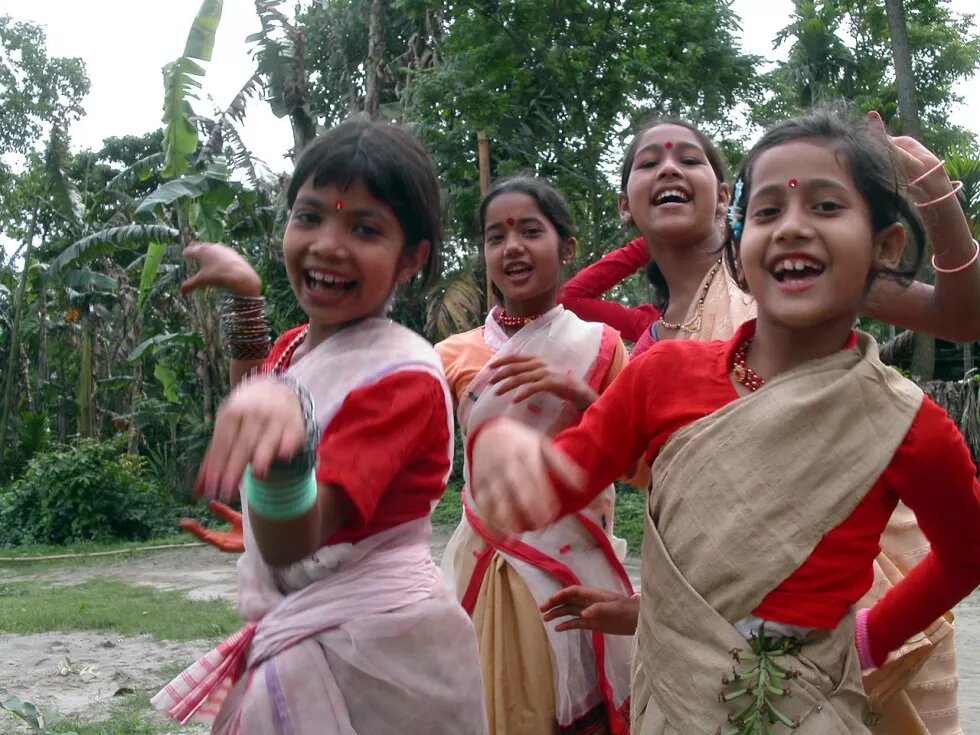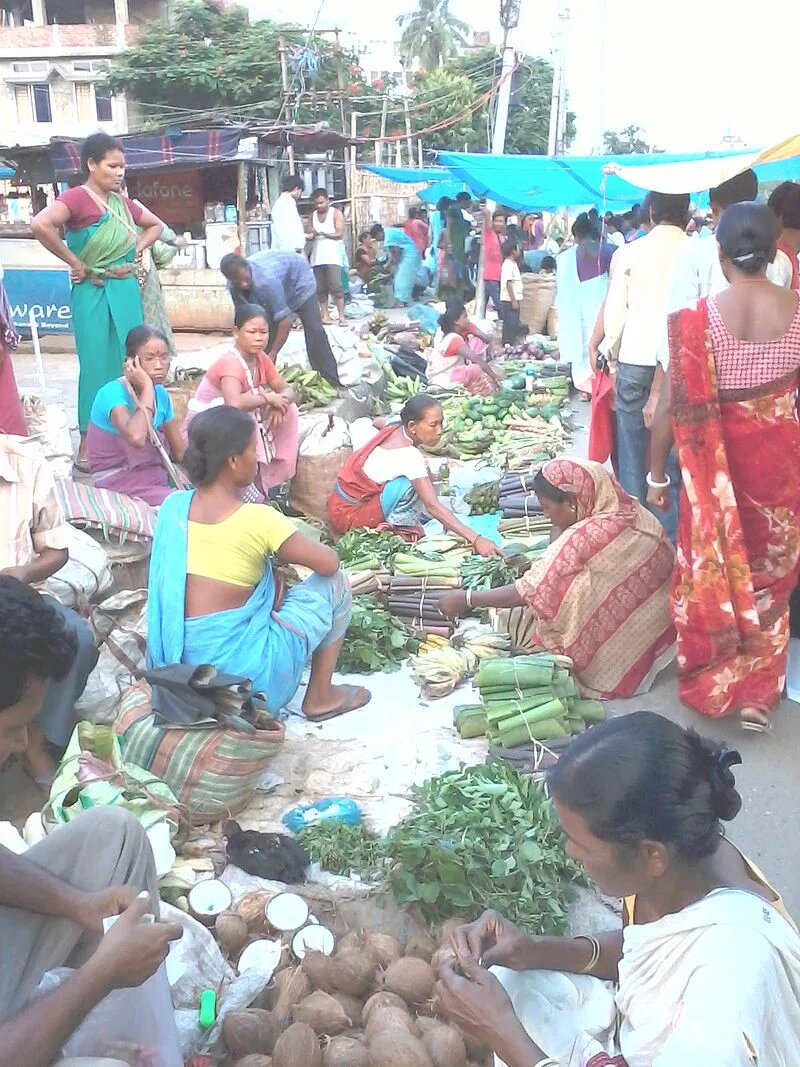
Neo-liberalism and climate change have helped reduce the status of indigenous women in Assam to unpaid domestic labourers or caregivers.

In the global south, a new form of colonialism has evolved with the neo-liberal market as perpetrator. It has induced multiple structural inequalities also subsuming under it, the body. As per Indian Forest Act of 1878, community commons were declared as wastelands and miles of deciduous forest were cleared off in Central and Western Assam for expansion of railways. The alluvium rich land of Assam Valley began the gold rush for commercial plantation of tea and teak, thereby introducing the saga of labouring bodies. Indentured labour from the Chota Nagpur plateau was poured into these plantations pushing the indigenous people higher into the hills from duars[1]. The plantation culture created a gulf between communities of the valley and hills rupturing their age-old cohesion over trade, frontier governance and social interaction. Thus, the indigenous communities of Brahmaputra of today are a shadow of their past. In the first wave of colonialism, their cohesion was replaced by isolation and in the second wave of colonialism in the neo-liberal era, autonomy among clans and kinship groups was further ruptured by introduction of money.
This external content requires your consent. Please note our privacy policy.
Open external content on original siteThe indigenous communities and the others
The market forces rendered a new dimension of profitability to the relation shared by indigenous women with nature and culture. Assimilation of neo-liberal traits led autonomy among clan and kinship groups to crumble owing to introduction of money. For instance, the endemic turmeric root, which was used to cure local ailments, became a tradable product. Younger generations are oblivious of the folk songs sung during community plantation of turmeric. They are also unaware of traditional weeding and harvesting practices, as turmeric plantation has begun to be outsourced by multinational companies. Similarly, other customs, services and products of the forest villages such as tribal festival, artifacts, structures and food have been commodified to entertain brown-sahibs working as white-collar professionals in multi-national companies, seeking nature’s sojourn.
Outside interference in erstwhile autonomous societies began with colonial ethnographers eroticising the indigenous people as remnants of a savage world, far from world wars and modernisation. Often the British anthropologist was closely followed by Marwari moneylenders from mainland India who made inroads into tribal heartland replacing barter in the self-sustaining ethnic economy by bonded labour. The illiterate forest tribes were traded off in the market by these shrewd moneylenders who were addressed with envy as 'asami'. In this process, the tribal woman became a property disposed sometimes as labour and other times as flesh. The asami disapproved of indigenous customs thereby imposing mainstream values in forest society and the indigenous woman became an agency to propagate his cause. For instance, the Rabhas of Assam had the custom of deka-chaang, which was a social arrangement for young girls and boys to interact and explore potential marriage partners. However, the moneylender along with economic transformation brought in social transition. He launched a mission of moral salvation by introducing the mainstream notion of shame in forest villages, thereby alienating indigenous people from their ancestral culture.
As neo-liberalism strengthened, forest villages resembled market spaces. This endeavour was aided by the government and projected as transforming the linkage between indigenous and market societies by bringing in employment and development through ecotourism resorts. These resorts amidst forests legitimised the presence of a different set of outsiders, namely the backpack travelers, who became customers procuring ecosystem services and ethnic culture, in the name of ecotourism. This began the saga of neo-liberal deceit and ordeal of dehumanising indigenous bodies.
Backpack travelers and women as labouring bodies
The outsider is a representative of the consumerist society who ventures into forest villages seeking pleasure from ethnic cuisines, spaces, bodies and festivity. The gains, which they seek from the forest is entertainment often translated as tranquility. Resorts and home-stays thus become avenues for the service industry transforming the natural zone of Chandubi lake into a tourist hub, advertised with the punchline, 'backward is beautiful'. As backpack travelers, both national and international, mostly urbane and university educated, entered the forest hinterland of Chayani Borduar Forest Reserve languishing in home-stays and occasionally taking forest trails, the indigenous women's drudgery and servitude as labouring bodies galvanised. It required her to dispense traditionally ascribed cultural roles, in addition to the emerging role of entertaining guests, providing ethnic cuisine and liquor. The inflow of money into the household increased her domesticity by restricting her participation in the public sphere and even prevented education in context of adolescent girls. Home-stays eulogise traditional norms thereby trapping her within four walls. These spaces are often owned by male members of the society but their roles are limited to tending of guests, providing guided tours and collecting fees. Thus, the labour of the indigenous woman remains hidden as her work is seen as a mere extension of domestic responsibility.
The consumers of ethnic culture constantly seek natural or authentic ways of acting and behaving, which has imposed newer standards of gender norms. The indigenous woman becomes an actor in her own household where her behaviour unfolds as theatre and the outsider its audience. She remains in constant surveillance and becomes an alien in her personal space because her emotions and mood require being in consonance with that of the guest’s. Especially on weekends, she is expected to make cultural performances of dance and drama to rejuvenate these nature enthusiasts. Today the sense of festivity is replaced by gross routinisation as the indigenous woman becomes an incoherent puppet in the ecotourism[2] loot.
Gendered bodies are contested sites. In the postmodern sense of the word, the indigenous woman is required to dress and accessorise in such a way that her body resemble a cultural museum. A race has ensued searching for beads and family heirlooms to mesmerise potential customers. Also, resurgence of bamboo artifacts and handicraft are parts of this re-ethnicisation process. Her cohesion with nature is replaced by bargain to suit the neo-liberal taste of backpack travelers while she herself becomes a cog in the wheel of nature based industry, too weak to protest and voiceless to resist domestic drudgery.
She is required to spend longer hours tussling forces of nature in the forest, field and pond systematically segregating the limited resources for her family and guests. Her closeness with the ecosystem and culture are mythically glorified in folktales, which she herself resonates in the form of short stories or songs to sooth the ears of travelers. She is indoctrinated in the gendered division of labour and accepts her diminishing being as a contribution to the welfare of society and family. She fails to acknowledge that unpaid hidden labour is a surplus accumulation of benefits, which she will never reap, instead more is expected of her to satisfy the sensual urges of travelers. Thus begins a saga of abuse at home where her overworked body is toyed around in the name of full customer satisfaction.
So, the home-stays have converted the indigenous woman to private machines producing labour of love while being excluded from the political process of decision making, entitlements and wage. She is perceived as subordinate to her male counterpart despite being the real breadwinner of her family. She continues to be the second sex despite trading her being and body to ethnic consumers bearing baggage of nature, culture and market in the forest based ecotourism industry.
Indigenous structures, beings and the new other
Ecotourism is hailed as a successful strategy by the government to include the forest villages into the mental map of economy. Advertisement of this cause is done by reintroducing primitive means or transport and bamboo platform houses in the forest tracts with an aim to enhance ethnic experience highlighting its bio-degradable character. Traditional houses called chaang ghor (platform cottages made of bamboo) have reentered the community space and become an integral part of the ethnic retreat. The traditional drip irrigation system made out of bamboo and non-motorised wooden boat are artifacts from the past introduced by the government to pull nature enthusiasts. But such efforts have been incompatible with welfare policies for inclusive development and have not met basic needs of the rural poor. The forest communities are trapped in the shadows of their past as development continues to elude them in the disguise of ecotourism.
Ecotourism has not only influenced the body but also structures of a society wherein modern equipment must coexist with manually operated primitive ones. Re-ethnicisation is challenged by factors like erosion of indigenous knowledge wherein women do not have the agency to question, or rather reproduce, objects and acts without doubt. The Chandubi forest is known for the malarial epidemic and the parasites were kept at bay by burning different variant of leaves with straw to cleanse the atmosphere. This practice of burning ‘thupa’ has lost its utilitarian value and instead has become a showcased custom performed during tourist seasons.
Introduction of a class of contractors by the government to broker between the local people and travelers has further transformed culture into a procurable item. He[3] is an insider of the Rabha society but adept in mainland language, needs and networks. The contractor resembles a feudal lord, controlling the network of home-stays, tour guides and organises cultural shows in the forest villages. He has become custodian of primitive ways and modern marketing strategists to keep the inflow of tourists alive. He is the bridge between the people, customers and government. This contractor of culture has turned Sal groves into museums and festivals into business ventures. Female headed households are most vulnerable being forced into voluntary labour by these indigenous entrepreneurs. Young girls are hired as dancers and older women as cooks donating free labour for the sake of the forest society while the contractor continues to mint money from such entertainment. Thus, the transformation of forest space into commercial hub of culture is laden with stench of male supremacy and oppression from within.
Re-introduction of primitive modes of operation appears exotic to the city eye but has bogged down the indigenous woman. Fuel and technology, which is supposed to reduce her drudgery has been banished in favour of backwardness leaving her at the mercy of muscles. This has compromised her health and decimated her into a human machine. Today, she is required to share her home with strangers in the name of heritage conservation while preservation of self remains marred in doubt. The lines between personal, political and price is getting blurred for the indigenous women as she becomes a mere pawn in the ecotourism industry.
Catastrophes, vulnerabilities and mindset
Rising ecological catastrophes are indications that climate change is a reality hunting down the last man standing, turning notions of a dystopian society into reality. In the Brahmaputra Valley, it manifests in form of tidal waves and devastating earthquakes affecting communities on margins. These ecological catastrophes have become more frequent and rendered geographies in a permanent state of chaos. Indigenous communities with unique ethnic, racial and linguistic ties have become helpless victims of such catastrophes, unfurling a saga of displacement from ancestral roots, loss of indigenous culture, migration of males to urban centres and feminisation of poverty.
Disasters are followed by domino effect on the economy, polity and society, which has disproportionately victimised women because of her pre-ordained gender role preventing her mobility, decision and choice. An enquiry into subjectivities of disasters lay bare women as living flesh (Bhattacharjee 2018) breaking duality of private and public. The dwindling sex ratio in India is not merely an economic figure but a reflection of deep-seated bias against females, which is illustrated by the example below.
During floods, baring a few highlands, rivers, ponds and paddy field become one resembling a huge sea of turbulent muddy water.
In the Sumoimari Mishing Gaon of Majuli, a father with two children had boarded a banana raft to reach the embankment but suddenly the raft was caught in a whirlpool, colloquially called the deadly 'kur'. Within minutes the raft dismantled but the father held on to his children, a son and a daughter. As turbulence rose, drowning seemed inevitable. At that moment, a mythical voice of his ancestors echoed, "...free your hand, leave your daughter behind! Swim to safety with your son, he carries forth your lineage!"
The father recollects that he did as was directed!
The proliferation of market relations based on exploitation of natural resources has increased the number of disasters worldwide directly affecting women in their day today life. Catastrophes are becoming anthropomorphic and nature is the aggressor yet women at the grassroots are unable to disassociate from all of it given that they share a symbiotic relationship with the ecosystem. Disproportionate burden of nature is borne by women, which also reflects in the number of recorded deaths. The rate of casualties as per statistics post Indian Ocean tsunami reveals that women died in greater number during the disaster than men – 73 per cent female fatalities in Cuddalore of Tamil Nadu and 77 per cent to 80 per cent in various parts of Indonesia (MacDonald 2005, Aglionby 2005). The opportunity of survival of women in disasters is skewed because culturally they are expected to care for the household, children and elderly. Caregiving roles place them at greater risk to adapt, cope and survive (ibid).
Besides, the indigenous woman is perceived as an embodiment of culture, as her body becomes a stage to reproduce it on daily basis, decimating her chances of survival. Mekhela Chador, worn by the Assamese women, or Phaneks, by Manipur women, on a daily basis act like chains during floods preventing them from swimming, climbing or even running in flood prone zones. Sordid tales are told of mothers with children in tow being drowned by tidal waves imprisoned in the straitjacket of traditional dresses. Historically, traditional dresses have put women at great disadvantage by reducing mobility but today their susceptibility has enhanced because of increase in magnitude and frequency of hydro-climatological disasters owing to climate change. Repeated and unpredictable exposure, especially to floods clubbed with pre-existing traditional structures, has weakened the indigenous women.
Natural calamities in the Northeast of India are not a contention of the fraught times but a permanent risk within which identities and frames are created. Customs and traditions of the indigenous people are shaped keeping in mind the seasonal shifts. Living on the Brahmaputra Valley means coexisting with floods and river bank erosion; thus life and labour in the valley are precarious. Anthropological excerpts from Kathoni Bari Ghaat of Morigaon bring to light the clash of forces of nature with space and communities, manifesting multiple layers of gender based vulnerabilities. An empirical excerpt below seeks to explain this.
Das Baideo has been languishing in the government relief camp for six months now. She points at the heart of the Brahmaputra sighting and stating "Our ancestral land lie 3 nautical miles inside the river. This year, ‘gorakohoniaya’ i.e., river bank erosion has permanently displaced us. Now we have nowhere to go."
The family had marginal farm holdings since decades but chronic annual flooding had pushed them to penury. This led Das Baideo and her husband to offer free labour to the local moneylender but the flood and erosion of 2017 in middle reaches of the Brahmaputra served its final blow. It turned the family from marginal farmer to landless destitute. The erosion, which dispossessed the family, forced her husband to move to Guwahati, an urban centre as a security guard of a private company. He managed to remit a few hundred rupees but it was grossly inadequate. Without ancestral asset and inadequate earning, Das Baideo remained stranded in the relief camp with her children.
As time drew near to evacuate the camp, she was required to search for a new dwelling and a new piece of land to cultivate on. This was in addition to her old roles of securing fodder, fish and firewood on daily basis for her family. Her existence was compounded by an emerging responsibility of protecting her adolescent daughter from slanderous men who cohabited in the precarious terrain.
Thus, surviving catastrophe is accompanied by its own drudgery, which endangers livelihood and security for the asset-less indigenous woman. It doubly burdens her social intercourse decimating her being. The woman of the developing world faces greater susceptibility to catastrophes because of historic and geographic variability which continually (re)produces essentialised identities, further disempowering her to become an equal member of the economy, polity or society.
Conclusion
So long as society was insulated from external forces, the system of traditional burden on women continued without hitch. However, it aggravated with the coming of neo-liberalism and climate change. Subjective experience of loss and indignity of the indigenous woman reveal the trap of market and culture, which have imprisoned her either in home-stays as embodiments of culture or as residue post-disasters performing caregiving roles. In both cases she is coerced by social norms thereby failing to overcome the drudgery of unpaid domestic labour. Behind the bond of cohesion with nature lies deep seated exploitation by patriarchal forces from both within and outside society.
Some instances suggest that slowly she is attempting to overcome primeval bond with nature and culture by exercising ownership over resources. Politicising the ethnic spaces by public policy innovation such as, guaranteeing 33 per cent reservation in panchayats, the lowest unit of institutional democracy are proactive measures doing justice to indigenous women. Yet the ills of patriarchy continue to haunt wherein husbands of the incumbent women representatives govern on their behalf. The institution of sarpanch-pati is a reminder that proxy based democracy exists and the voice of the marginalised indigenous woman remains unheard. Thus, inclusive development will remain a utopia unless the indigenous woman becomes an equal member in society.
Disclaimer: This article was prepared with the support of the Heinrich Böll Stiftung India. The views and analysis contained in the publication are those of the author and do not necessarily represent the views of the Heinrich Böll Stiftung
Endnote
[1]Duars/ Dooars are the alluvial floodplains in Northeast India that lie south of the Brahmaputra Valley, bordering with the foothills of Himalaya.
[2]The Chandubi Lake region is a fragile ecosystem in the Chayani Borduar forest reserve along which the Rabha community resides in forest villages. This region has been declared as an ecotourism hub by the government. However, there is disjuncture in name, nomenclature and practice as the region is in low Human Development Index (HDI) and gross domestic product (GDP). The Chandubi Lake is of seismic origin that emerged in the earthquake of 1897 and is the nodal point around which this ecotourism zone is declared. But the rest focus rests on forest villages surrounding the lake, where tourists leave their footprints after brief ride in the lake on country made boats and short forest trails. Indeed, travelers enter a vulnerable ecology and observe the wilderness but their action and enthusiasm are more ethnically inclined thereby transforming ecotourism in the Brahmaputra Valley to ethno-ecotourism. Tribal belts in India coincide with the natural zones, thereby enmeshing ecology with ethnicity. Unfortunately, these are also the regions with low income, poor HDI and Gender Development Index (GDI).
[3] Use of the word ‘he’ is deliberate because in a society stratified along the lines of gender, male possess greater power, authority and command. The contractor often belongs to the family of the village headman thereby garnering internal allegiance and outsider’s respect.
References
Aglionby, John. 2005. "Four times as many women died in tsunami." Newspaper Article, Global development, Jakarta: The Guardian.
Bhattacharjee, Sukalpa. 2018. "The Politics of Gendered Resistance: Body and Agency." In Northeast India: A Reader, by Bhagat Oinam and D Sadokpam, 345-347. New Delhi: Routledge India Original.
Leach, Melissa. 2007. "Earth Mother Myth and Other Ecofeminist Fables: How a Strategic Notion Rose and Fell." Development and Change, 38 67-85.
MacDonald, Rhona. 2005. "How Women Were Affected by the Tsunami: A Perspective from Oxfam." PLOS Med. e178.
Brydon, Lynne. 2002. "Gender and structural adjustment." In Companion to Development Studies, by Vandana Desai and Robert, B Potter, 338-341. New York: Arnold.
Nongbri, Tiplut. 2014. "Development Masculinity and Christianity: Essays and Verses from India's North East." Shimla, Rashtrapati Niwas: Indian institute of Advanced Study.
Parpart, Jane L. 2002. "Gender and empowerment: new thoughts, new approaches." In: Companion to Development Studies, by Vandana Desai and Robert B Potter, 338-41. New York: Arnold.
Shiva, Vandana. 2002. "Staying Alive: Women, Ecology and Development." New Delhi: Zed Books.


